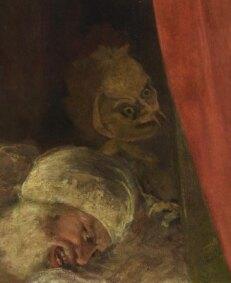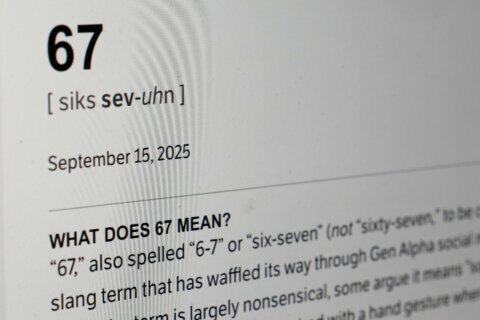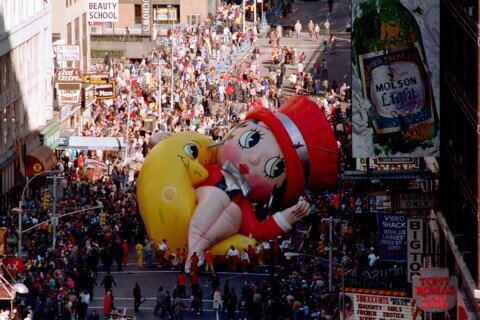▶ Watch Video: Art restorers: Making the old new
A hidden face recently uncovered in a 1789 Joshua Reynolds painting proves the devil is in the details. In “The Death of Cardinal Beaufort,” Reynolds included a demon-like face lurking behind the dying cardinal. But the controversial and chilling demon appeared to fade out of the painting over the years, as multiple conservationists worked on it. Now, the painting has been restored to include the original fiend.
The National Trust, which conserves historic landmarks in England, Wales and Northern Ireland, recently conserved four pieces by Reynolds to mark what would have been the English painter’s 300th birthday, the Trust said in a news release.
“The Death of Cardinal Beaufort” depicts a scene from Shakespeare’s Henry VI Part 2, as the king witnesses the death of Cardinal Beaufort, his great-uncle.
Reynolds created the painting for the Shakespeare Gallery in London’s Pall Mall at the end of his career and the inclusion of the lurking figure over the deathbed was not well received, said John Chu, the Trust’s senior national curator for pictures and sculpture.

“It didn’t fit in with some of the artistic rules of the times to have a poetic figure of speech represented so literally in this monstrous figure,” Chu said in a statement. “When it was first shown at the Shakespeare Gallery in 1789 it generated more controversy than any other work on show.”
“While it was considered acceptable in literature to introduce the idea of a demon as something in the mind of a person, to include it visually in a painting gave it too physical a form,” he said. “There were even people who argued that it should have been painted out, although records of conversations with the artist show he resisted such attempts to alter the work.”
At the time, one art critic said the lurking demon is not a character in the Shakespeare play, so it should not have been included in the painting. But contemporary Erasmus Darwin, a British physician and poet, supported the inclusion of the demon and argued that paintings, like poetry, can express metaphors.

Early prints of the painting showed the demon, but in a second printing of the work in 1792, there was an attempt to remove the evil-looking face, according to the Trust.
In the original painting, the face looks deteriorated and faded, as if there was an attempt to remove or hide it – and it seems it did become more hidden over the years.
“It perhaps isn’t a surprise that it had receded so far into the shadows of the picture,” Chu said. “It appears it was misunderstood by early conservators. Some decades after the painting was done, that area seems to have deteriorated into small islands of paint and become less clear due to the constituent parts of the paint.”
The work seemed overpainted to the Trust conservationists. Several layers of paint and six layers of varnish made conservation difficult, said to Becca Hellen, the Trust’s senior national conservator for paintings.

“Reynolds is always difficult for restorers because of the experimental way he worked, often introducing unusual materials in his paint medium, striving for the effects he wanted to achieve,” Hellen said in a statement. “The painting was lined, with an extra layer of canvas applied to the back, in the 19th century and at that time too much heat would have been applied.”
The fiend is depicted in the shadows and painted with dark colors, which dry slowly and can cause a shrinking effect, which added to the already challenging conservation effort.
“With the layers added by early restorers it had become a mess of misinterpretation and multiple layers of paints,” Hellen said.
The Trust restorers wanted to ensure the painting still included what Reynolds originally created – a fiend. They removed the non-original darkened varnishes to uncover the demonic face.
The painting is on display at the Petworth House in West Sussex – where it has been for decades, excluding when it was being conserved by the Trust.







